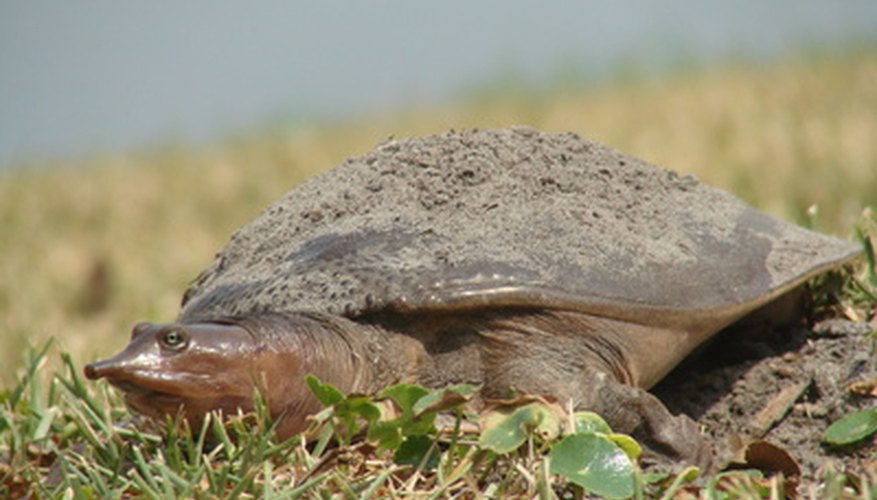Soft-shell turtles are the largest freshwater turtles in the world, with the nearly extinct Swinhoe's softshell weighing up to 136 Kilogram. The turtle is characterised by its soft pancake-shaped shell and snorkel-like nose. Determining the sex of these turtles is simple when you're comparing a male and a female of the same age and species since the female is noticeably larger than the male. However, there are other ways of telling the difference when there is only one turtle to examine.
Examine the tail of the soft-shell turtle in question. The tails of males are thick and long, while the tails of females are thin and barely protrude past the rear carapace.
Look at the colour of the turtle. The male has a shell that is much lighter in colour than that of the female, whose shell grows darker with age. The female also may show dark grey mottling, or blotching, on the shell, while the shell of the male displays rings.
- Soft-shell turtles are the largest freshwater turtles in the world, with the nearly extinct Swinhoe's softshell weighing up to 136 Kilogram.
- The female also may show dark grey mottling, or blotching, on the shell, while the shell of the male displays rings.
Rub the shell. When you do this, you're checking for a specific sandpaper-like roughness that male soft-shell turtles have. Also, the male has soft ridges on the front edge of the shell. The female's shell is smooth all around.
Once you've completed each of these three tests, you should know the sex of the turtle.
